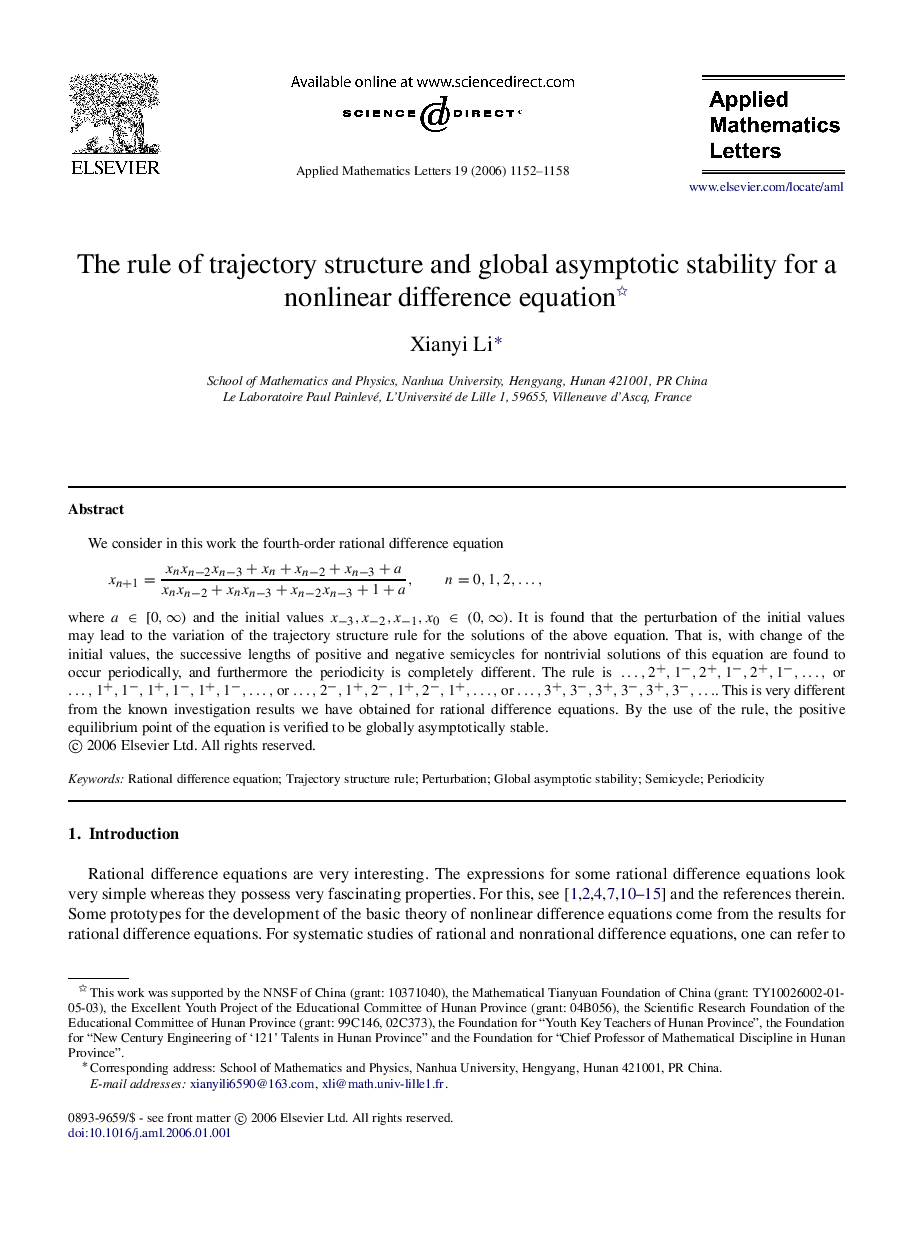| Article ID | Journal | Published Year | Pages | File Type |
|---|---|---|---|---|
| 1710564 | Applied Mathematics Letters | 2006 | 7 Pages |
We consider in this work the fourth-order rational difference equation xn+1=xnxn−2xn−3+xn+xn−2+xn−3+axnxn−2+xnxn−3+xn−2xn−3+1+a,n=0,1,2,…, where a∈[0,∞)a∈[0,∞) and the initial values x−3,x−2,x−1,x0∈(0,∞)x−3,x−2,x−1,x0∈(0,∞). It is found that the perturbation of the initial values may lead to the variation of the trajectory structure rule for the solutions of the above equation. That is, with change of the initial values, the successive lengths of positive and negative semicycles for nontrivial solutions of this equation are found to occur periodically, and furthermore the periodicity is completely different. The rule is …,2+,1−,2+,1−,2+,1−,…, or …,1+,1−,1+,1−,1+,1−,…, or …,2−,1+,2−,1+,2−,1+,…, or …,3+,3−,3+,3−,3+,3−,…. This is very different from the known investigation results we have obtained for rational difference equations. By the use of the rule, the positive equilibrium point of the equation is verified to be globally asymptotically stable.
